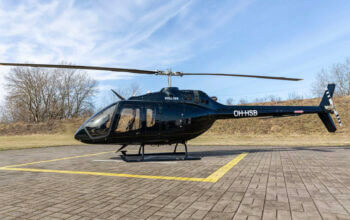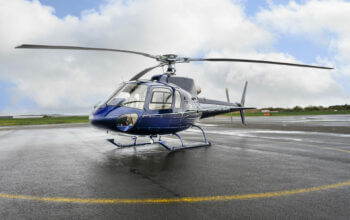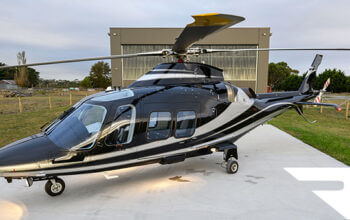Estimated reading time 8 minutes, 4 seconds.
A Canadian aviation safety expert says runway construction at San Francisco International Airport (SFO) may have been a contributing factor in the chain of events that led an Air Canada Airbus A320-200 to seemingly line up for landing on a busy taxiway instead of the parallel runway.

The close call occurred just before midnight local time on July 7, 2017, when AC759 was inbound from Toronto. The crew was cleared by SFO air traffic control (ATC) to conduct a visual approach to Runway 28 Right (28R).
According to a preliminary report produced by the Canadian Transportation Safety Board (TSB), the Air Canada crew asked ATC to re-confirm the clearance when they were about 0.6 nautical miles back from the runway threshold, saying they saw lights ahead. The controller re-confirmed that AC759 was cleared to land on Runway 28R, adding, “There’s no one on 28R but you.”
Four commercial aircraft–loaded with fuel and passengers–were on Taxiway C at the time, which runs parallel to Runway 28R. A crew member from one of them spoke up over the radio, asking, “Where’s this guy going? He’s on the taxiway.”
ATC issued an immediate order for AC759 to initiate a go-around, which was confirmed and carried out by the crew. The aircraft subsequently landed without further incident.
The TSB report indicates the Airbus had overflown the taxiway for about 0.25 miles before the crew was instructed to go around. The document estimates that the Air Canada jet cleared the first two aircraft on the taxiway by just 100 feet; the third by 200 feet; and the fourth by 300 feet.
“It’s a significant issue; a high-risk situation,” said Barry Wiszniowski, president of Aviation Safety Management Experts and an aviation accident investigator with an industry background spanning four decades. Wiszniowski is also an experienced 17,000-hour pilot who currently flies the Boeing 767 with a major Canadian airline.
He told Skies that it will likely take years for investigators to fully dissect the chain of events in San Francisco. The U.S. National Transportation Safety Board (NTSB) is leading the inquiry and has opened an investigation.
In a July 12 email to Skies, NTSB media spokesperson Keith Holloway wrote: “Not much information available at the moment. We have not sent any investigators yet but I suspect that will happen at some point soon, possibly within the next few days. I do know that part of the plan is to interview ATC as well as the crew on board the aircraft involved. Additional information will be released as it becomes available.”
Factors at play
Wiszniowski explained there are many factors that can contribute to a situation like the one that transpired in San Francisco, including ATC, airways, human factors, aircraft equipment and operator procedures. He added that the NTSB will assign its experts to systematically examine every angle.
In this case, he feels the human factors findings will be especially interesting.
He explained that during normal operations as a flight crew member, pilots build certain mental models and expectations for each flight. He said a condition called “confirmation bias” occurs when a pre-conceived notion of what a situation should be overrides visual evidence to the contrary.
“There is some construction going on in San Francisco at this time with a runway closure of 28 Left (28L),” Wiszniowski told Skies.
A notice to airmen (NOTAM) advised pilots that 28L was closed and lights were off to prevent aircraft mistaking it for an open and active runway. However, the actual view of the airport on approach–with 28L in darkness–may have clashed with any previous mental maps of the airfield, perhaps introducing an element of confusion for the Air Canada crew.
“I can’t speak on behalf of the other crew, but it could exist where you are used to seeing one thing at a particular airport, the situation changes and yet you still expect to see the same thing. Your model may not change to adapt to the new situation. It’s a possibility, but I would defer to the experts of the investigative group who would come up with that finding,” said Wiszniowski.
He said it’s possible pilot fatigue may have played a role, noting that the aircraft was on approach around 2:30 a.m. Toronto time when an adult’s circadian rhythm is typically at its lowest.
“One of the things we know for sure that exists in human factors is the degradation of pilot performance due to fatigue. An example of that is decreased judgment, situational awareness, memory, decision-making, etc. In the audio tape we heard of the event, there seemed to be a state of confusion about aircraft on the runway of their intended landing. The controller came back and said there were none. So the question is, what factors affected the crew’s mental model, judgment or visual cues?”
But regardless of whether or not the pilots were battling fatigue, Wiszniowski said the situation involves several other factors that have been identified by the Flight Safety Foundation (FSF) as contributing to approach-and-landing accidents.
The FSF found that 53 per cent of accidents and incidents in that phase of flight occurred during non-precision or visual approaches. Darkness and flight crew disorientation also made the organization’s list of contributing factors.
“This event in San Francisco was night, non-ILS [instrument landing system], with a portion of the approach involving a transition from IFR to visual flight rules. So there are three or four common factors in this event which were identified by the FSF in 2000 as factors in approach-to-landing accidents,” he said.
As a seasoned pilot, Wiszniowski believes the best way to fight confirmation bias is to follow standard operating procedures (SOPs) to the letter, verifying procedures as if it’s always your first time at any airport.
“We have checks and balances,” he said. “If I’m doing a night flight I prepare for it and mitigate fatigue by controlling my rest prior to duty. And we use CRM [crew resource management], where one pilot’s actions will be checked and verified by the other.”
Wiszniowski said the investigation results and the lessons learned from Air Canada’s close call in San Francisco will ultimately make aviation safer. He cited several accidents where subsequent inquiries led to positive global change.
“Through the investigation of this event, recommendations will be made and contributing factors will determine what led to this significant aviation incident,” he concluded. “Several factors will be addressed, and there will be an in-depth look, probably through the investigation’s human factors group.”









Does anyone believe that the AC crew would have actually landed on the taxiway after overflying 4 airplanes? When the controller told them to “go around” they replied that they were ON the go around, so looks like they caught the mistake and had already initiated a correction.
For sure it was a dangerous mistake, but I feel the media has hyped this into something bigger than it is.
I am content to wait for the final report, but doubt if anyone would be saying anything about media hype if a loss of separation between two (or more) flying aircraft resulted in a minimum distance of 100″
Definitely typical media puffings.
As a 2 person crew, how can you possibly line up and descend so close to a taxiway when right next to it is the full set of runway approach lights, side and center-line lights including a localizer for where you should be landing.
Visual approach hint to AC pilots: “Taxiways have blue lights, runways have white lights… “
Well, from what has been reported in media, the AC 759 flight deck had no idea they were lined up on a taxiway, so much for CRM, certainly it sounds like the UA PIC saved the day and alerted ATC and AC flight deck, the fact they were only 98 feet from disaster, before the go around.